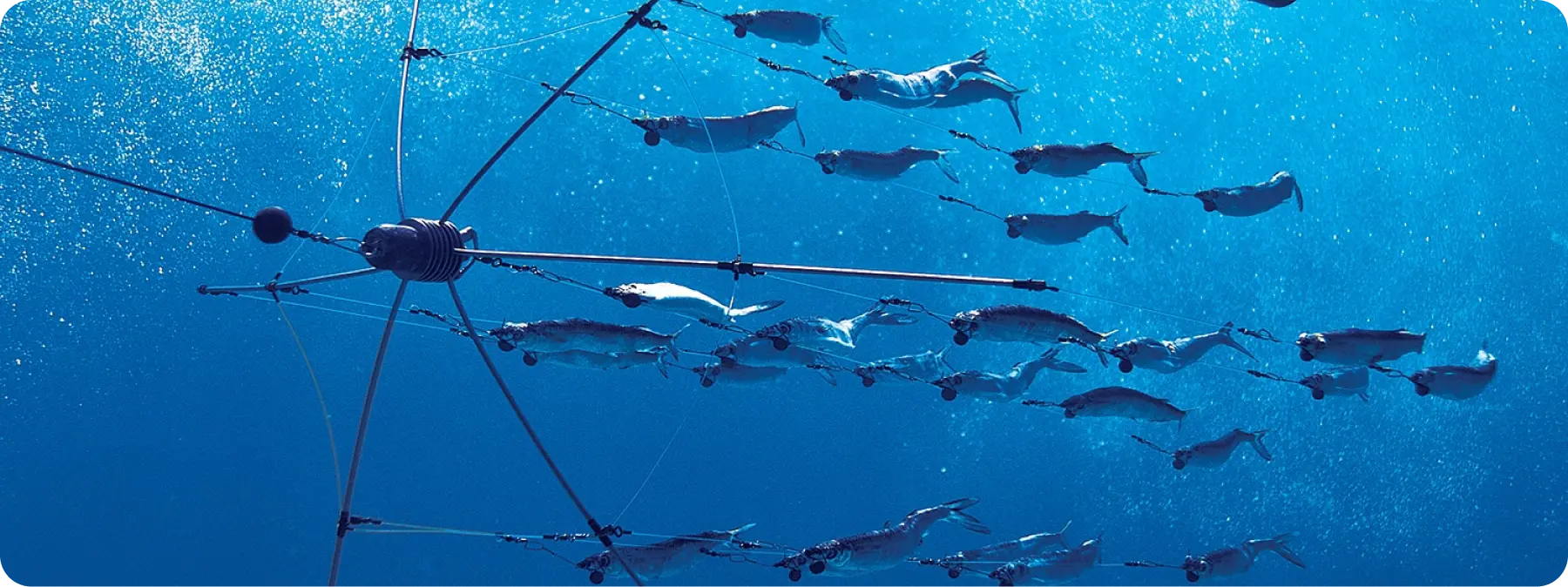Fishing With A Dredge For Billfish
 February 28, 2024
February 28, 2024
When fishing in blue water for pelagics such as marlin or sailfish, it is crucial to troll a spread that will grab a billfish's attention and raise it from the depths. While teasers, daisy chains, and spreader bars still play an important role, it is essential to deploy dredges if you want to land more billfish.
It doesn’t matter who you ask in the sportfishing world; they will all say that fishing a dredge has changed the game regarding raising tournament-winning billfish...
This article will discuss what a dredge is, the basic concept, and how to connect and deploy a dredge so that you can compete with the best billfish anglers anywhere in the world.
What Is a Dredge?
A dredge is basically a heavy-duty umbrella rig that gets pulled at the beginning of a trolling spread to simulate a ball of baitfish. Dredges have four, six, or eight arms. Each arm has several connections or “drops” that can be rigged with artificial lures or bait. The lures or bait you attach to your dredge will be hookless, acting as teasers.
To avoid snapping, rig your dredge with wire or a heavy-pound test line and heavy-duty swivels. When you hold up a fully rigged dredge, it can resemble a fishing lure chandelier. Dredges typically come in diameters ranging from 18 inches to 38 inches.
The Purpose of a Dredge
You’ve pushed off from the dock, pinpointed an area with excellent sea surface temperatures over a canyon to target, and got the perfect baits rigged and ready to feed a hungry billfish; the only thing left to do is get their attention. The whole purpose of a trolling spread is to draw in the curiosity of large predators like marlin and sailfish. Each component of the spread is designed to create flash and vibrations for predators to detect. A dredge is hands down the most effective tool that you can use to create a realistic bait ball presentation.
When operating in such a vast environment, the larger profile you can create, the more likely you are to attract the attention of a large predator like a billfish. You can run one dredge, but most people will run one on each side of the boat. Dredges can also be tiered, making a presentation over nine feet long. The first dredge tier will always be the largest, tapering down as you add more to mimic the natural appearance of a bait ball.
Depending on the type of dredges you use, you can rig them with up to 120 lures or baitfish in the presentation. It is also important to have multiple backup dredges. It is not uncommon for the dredge to be attacked by a predator or have the arms break, so be prepared with extra.
How To Connect a Dredge?
The type of boat you are fishing out of can determine the best and most economical way to connect and deploy a dredge. Dredges can be connected using outriggers, a dedicated rod, electric reels, downriggers, or even stern cleats. The most effective way to connect dredges is via outriggers, or a dedicated dredge boom, with an electric reel.
Dredges create a ton of resistance, and an electric reel is the easiest way to control how far back you set your dredge and allow you to bring them in quickly when you’re teasing a billfish or you're hooked up. You will want to use heavy duty hardware to connect to your rigger pulleys. Most line connections with electric reels are made with 200 to 400 lb. monofilament depending on the location of who is controlling the dredge: cockpit or bridge.
How to Deploy a Dredge?
Now that your dredge is rigged up and ready to fish, it is time to put it in the water. Lower the dredge with minimal tension allowing the natural weight to get under the water. The dredge may flip over if you try to lower it too slowly.
The purpose of the dredge is to attract billfish to your spread, so you’ll want to let the dredge sit anywhere from 20 feet to 80 feet behind the boat. As you get comfortable fishing a dredge or pick up on a pattern, you can adjust how far it sits behind the boat. The main objective is to have it out of the prop wash and in clean water, but also have it visible to spot fish that rise on it. Tools like AnglerVision Aqua allow for more dynamic placement of dredges in areas where human sight is not longer a requirement as Aqua will alert, detect, and track fish in the spread.
You can also toy with setting the depth but typically set the dredge just below the surface to eight feet deep. You can deploy cannonball weights or weighted teasers to help increase the depth of your dredge. Technology like Aqua allows for dredge placement at deeper depths because human sight from the boat is no longer a requirement as Aqua will be monitoring, alerting, and tracking fish in areas where you can’t see from the boat.
Conclusion
It doesn’t matter who you ask in the sportfishing world; they will all say that fishing a dredge has changed the game regarding raising tournament-winning billfish. Get comfortable with basics, build confidence, and land more billfish.
